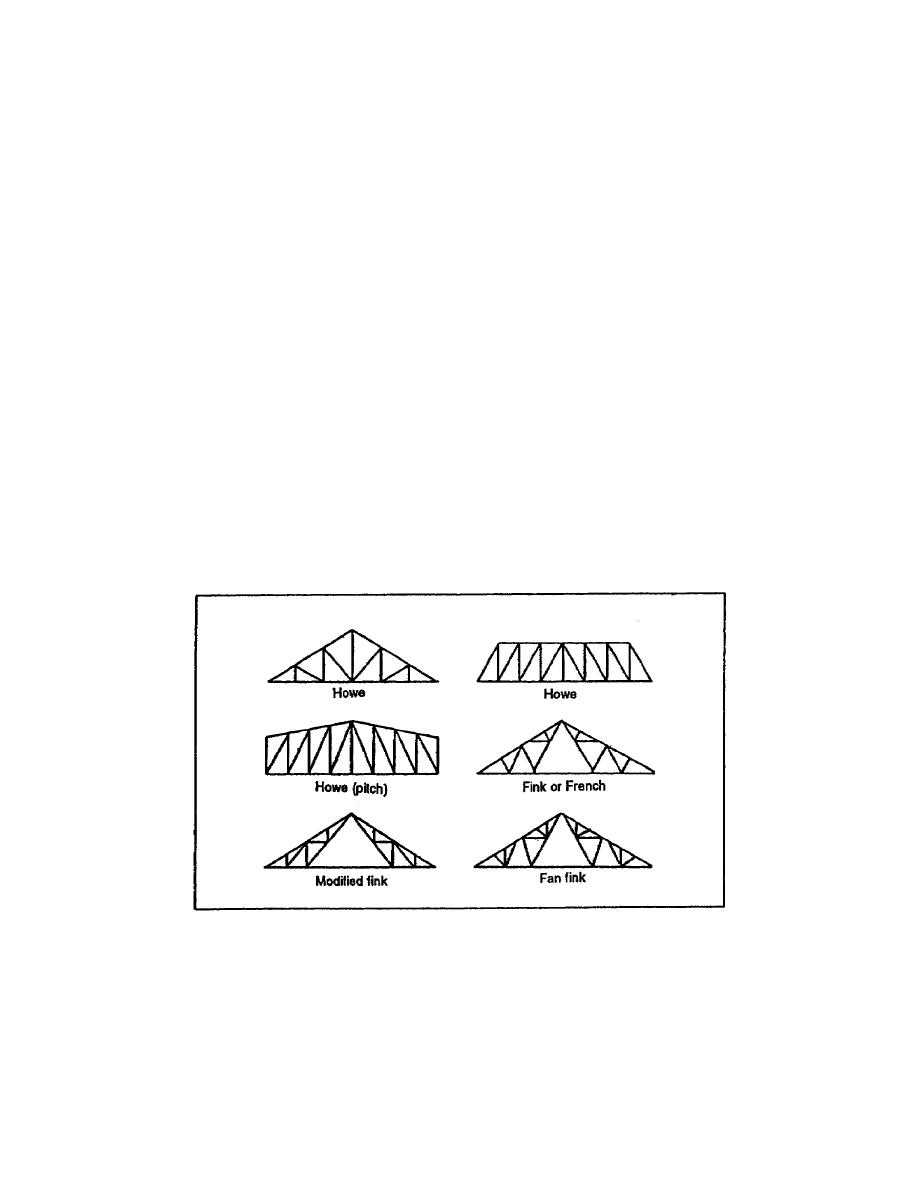
(3) Chord member. A member that forms part of either the top or the bottom chord.
(4) Member. The component that lies between any adjacent joints of a truss. It can be of
one or more pieces of structural material.
(5) Web member. A member that lies between the top and bottom chords.
(6) Joint. Any point in a truss where two or more members meet; sometimes called a panel
point
(7) Panel length. The distance between any two consecutive joint centers in either the top or
bottom chords.
(8) Pitch. The ratio of the height of the truss to the span's length.
(9) Height of Truss. The vertical distance at midspan from the joint center at the ridge of a
pitched truss or from the centerline of the top chord of a flat truss to the centerline of the bottom
chord.
(10) Span length. The horizontal distance between the centers of the two joints located at the
extreme ends of the truss.
d. Uses. Trusses are used for large spans to give wide, unobstructed floor space for such large
building as shops and hangers. The Howe and Fink trusses are most commonly used (see Figure 3-20).
Figure 3-20. Howe and Fink trusses
3-15
EN5156


 Previous Page
Previous Page
